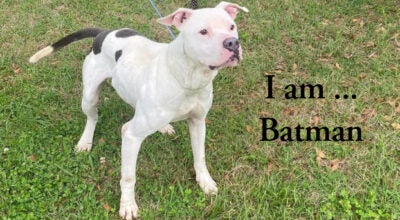GUIZERIX: Practice Safe Sun this summer
Published 4:00 am Wednesday, May 25, 2022
It’s no secret the personal toll skin cancer has taken on my family, after losing my father to stage IV melanoma in October of last year.
While my Daddy’s disease was due to genetic predisposition and not brought on by over-exposure to the sun, it’s a proven fact that sun damage is the number-one cause of melanoma. Having seen the devastating effects of the disease, and given the time of year, I want to implore you to make sure you’re “Practicing Safe Sun” this summer.
Skin cancer is the most common form of cancer, and according to the Skin Cancer Foundation, more people are diagnosed with skin cancer each year in the U.S. than all other cancers combined. One in five adults will develop skin cancer before they reach age 70.
Non-melanoma skin cancers, such as basal cell carcinomas, increased by 77 percent between 1994 and 2014. This can be largely attributed to the rise in popularity of tanning beds, as approximately 90 percent of nonmelanoma skin cancers are associated with exposure to ultraviolet (UV) radiation from the sun or artificial sources.
I’ve witnessed firsthand the way advanced-stage melanoma drained the life out of a person I loved more than anything in this world. I can only imagine how much worse a skin cancer diagnosis is for an individual who could’ve prevented or limited their exposure to the sun’s harmful rays.
So, what can we do to keep ourselves safe while enjoying the great outdoors in the summer months?
According to the American Academy of Dermatology, there are a few simple steps and tips to keep in mind for sun safety.
- Stay in the shade when possible. The sun’s rays are strongest between 10 a.m. and 2 p.m.
- Wear sun-protective clothing, such as a lightweight and long-sleeved shirt, pants, a wide-brimmed hat and sunglasses with UV protection, when possible. For more effective sun protection, select clothing with an ultraviolet protection factor (UPF) label.
- Apply a broad-spectrum, water-resistant sunscreen with an SPF of 30 or higher. Broad-spectrum sunscreen provides protection from both UVA and UVB rays. Use sunscreen every time you’re going to be outside, even on cloudy days.
Another huge tip that could save your life — or at least your skin — is to regularly perform skin checks. Examine your body regularly and notify a dermatologist if you discover any spots on your skin that have changed color, grown in size or are suddenly bleeding or itchy.
The earlier skin cancer is detected, the more treatable it is.
While we’ve always heard the phrase “tan fat is better than pale fat,” it might be best to just fake-bake. A tan, at its core, is a sign your skin is injured. Indoor tanning devices can emit UV radiation in amounts 10 to 15 times higher than the sun at its peak intensity, and more than 419,000 cases of skin cancer in the U.S. each year are linked to indoor tanning. Broken down, that equates to about 245,000 basal cell carcinomas, 168,000 squamous cell carcinomas and 6,200 melanomas.
I can assure you, that being bronzed for a few months every year isn’t work the risk.
Please slather on the sunscreen this year. An ounce of prevention could be the difference in life and death.






